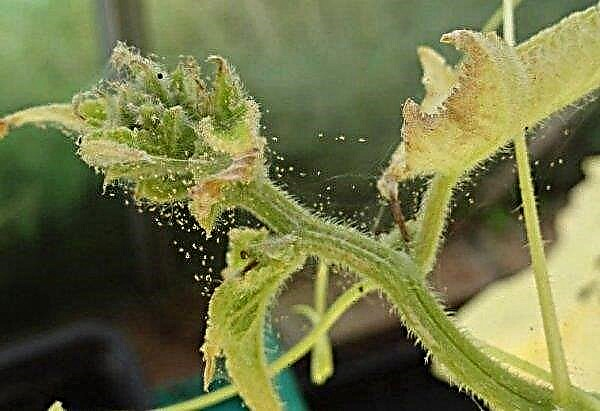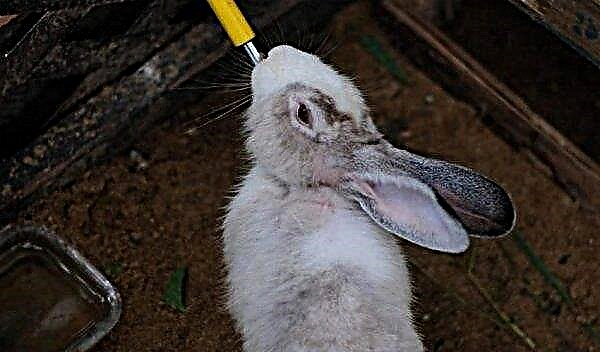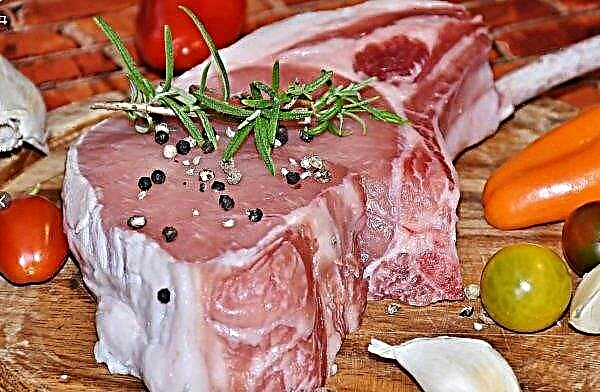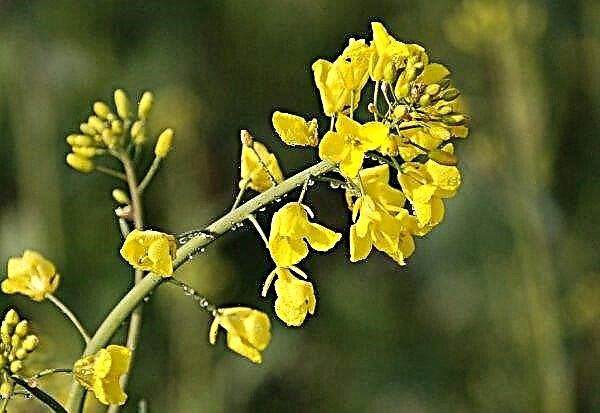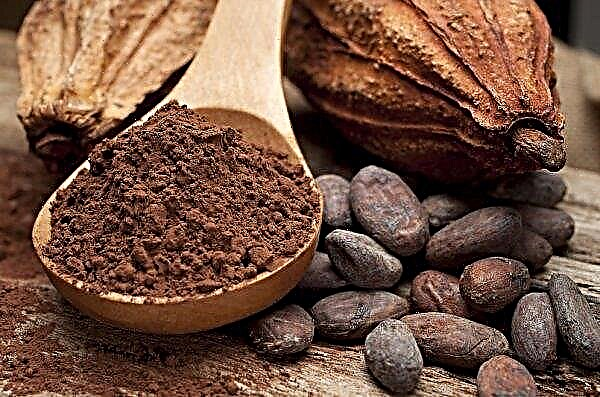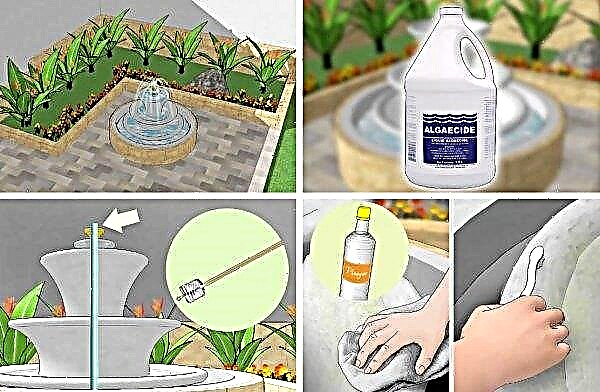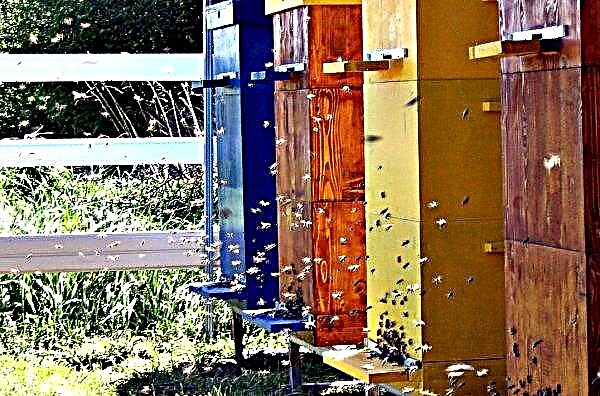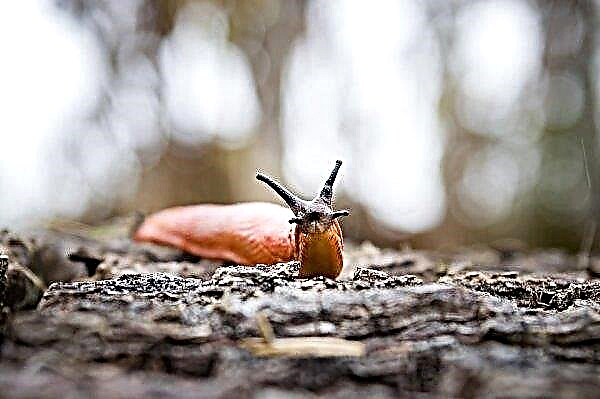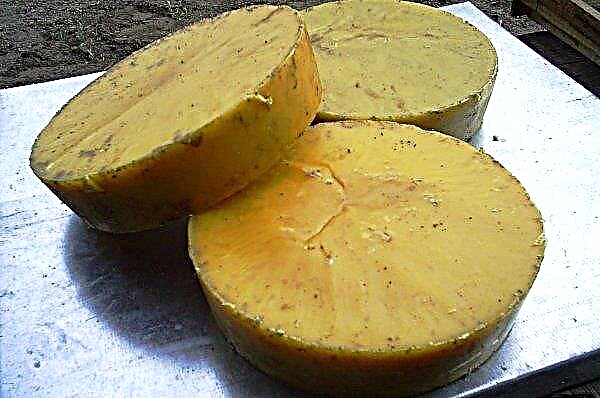Cabbage is attacked by many pests. Of course, you can disinfect vegetables with special insecticides. But sometimes folk remedies are also very effective. A substance such as vinegar can be found in any housewife. Consider the basic rules of how to process cabbage with vinegar.
Processing cabbage with vinegar from pests
The most common cabbage pests:
- cruciferous flea. As the name implies, it eats not only cabbage, but also other cruciferous vegetables. These are small bugs that can be of different colors, with hopping hind legs. A sign of these pests is the appearance of small holes on the leaves. When it appears, urgent protection of the vegetable is required, since in a few days the pests can completely destroy the bush. Larvae eat thin roots, and adults eat foliage;

- slugs. Although these mollusks are very slow, they manage to cause great harm to the vegetable crop, as they are very gluttonous. They leave behind a silver mark, which they give out their presence. In addition, they can be carriers of various diseases of plant crops;

- aphid. These pests live in colonies and feed on plant juices. Leaves turn yellow and curl;
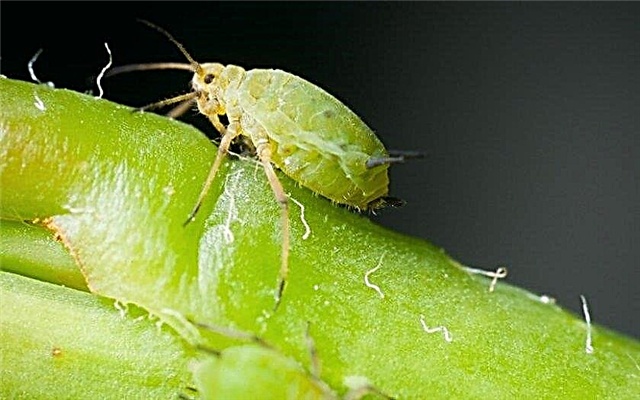
- cabbage leaf beetle - a small bug, black, but with a greenish tint. Gnaws small holes in the sheets. Hatches in the spring. Larvae eat a vegetable for about 3 weeks. Then the larvae pupate in the ground, and new bugs appear;

- caterpillars. Eat leaves and gnaw on the head of cabbage, leaving the products of their vital functions inside. Accordingly, cabbage heads become unsuitable for consumption or storage. These insects are active both in summer and early fall. And the reason for the appearance of caterpillars is butterflies, which lay eggs on the cabbage leaves. The most famous representatives: cabbage, cabbage scoop and cabbage moth. Cabbage cat is a white butterfly with small black dots. Most probably saw her, although they probably did not know how harmful it is to cabbage.
Scoop - leads a nocturnal lifestyle, has a dark color and looks like a moth, so it goes unnoticed. Cabbage moth - a small inconspicuous butterfly, lays small, almost transparent eggs. There are several types. Caterpillars, respectively, are also different. Some eat leaves, others gnaw stems, and still others gnaw leaves near the root;

- cabbage fly. Active from May to the end of June. It feeds on roots, because of which the plant dies.
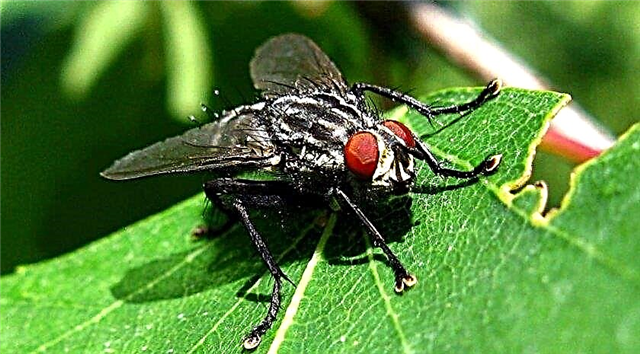
Benefits
- The advantages are inherent in most popular methods:
- safety for humans, plants and soil;
- availability of funds;
- you can use the vegetable immediately without waiting for a long period, as after chemical treatment;
- ease of preparation of solutions.
Disadvantages
- But there are situations in which the application will be ineffective:
- large landing area;
- too many pests.
Dates and indications for processing
Processing should be started as soon as a pest is noticed. Even if there are few insects, this is an occasion to start a fight with them. For prevention, you need to periodically inspect the cabbage leaves from the bottom for the presence of eggs and larvae, and also pay attention to defects in the leaves.
Important! The terms of preventive treatment are selected based on the period of the highest pest activity.
So, the indication for the use of vinegar can be:
- prevention from pests in the period of their greatest activity;
- first signs of a pest;
- early ripening varieties or heads of cabbage, which will soon be collected from the garden (chemicals in these cases can not be used).

Should be considered:
- fleas awaken in the spring when the temperature warms up to +15 ... + 17 ° C;
- the peak of aphid invasion is usually observed in July;
- processing from different butterflies (scoops, moths) is best to start in late May - early June;
- snails and slugs begin to annoy since the end of May;
- cabbage appears in July-August.
Basic processing rules
Processing is extremely simple, but requires compliance with these rules:
- plants can be sprayed only after sunset or at dawnso as not to burn leaves during the day;
- can be processed with vinegar emulsion (70%), and table vinegar (9%), but be sure to observe the proportions. If you take an emulsion, then the volume of water will need to be increased 10 times. Excess concentration may burn leaves;
- the prepared solution must be used immediatelyinstead of leaving the next time. Vinegar quickly disappears, and the product loses its effectiveness;
- vinegar can only be used on dry and better windless days. In rainy weather, water will wash off the product, and there will be no result.
Important! In recipes, vinegar will mean 9 percent table vinegar.
Methods for processing cabbage with vinegar
Cabbage can be processed in several ways:
- pour over leaves from a watering can;
- Spray the product with a broom or spray with a spray gun.
 When processing it is better that the solution falls on both sides of the sheet. Before processing cabbage leaves must be dry. That is, if spraying is expected in the morning, then dew should come off.
When processing it is better that the solution falls on both sides of the sheet. Before processing cabbage leaves must be dry. That is, if spraying is expected in the morning, then dew should come off.To combat aphids and cabbage
Ingredients:
- 1 tbsp. a spoon of vinegar;
- 1 liter of warm water.
Cabbage flea
Ingredients:
- 1 cup vinegar;
- 10 liters of water.
 You can use apple cider vinegar. To do this, 1 cup of such a substance is dissolved in 3 liters of water.
You can use apple cider vinegar. To do this, 1 cup of such a substance is dissolved in 3 liters of water.Slug
Ingredients:
- 2 tbsp. tablespoons of dry valerian;
- 1 glass of water + 2 liters;
- 1 tbsp. a spoon of vinegar.
Did you know? It has not yet been established where garden cabbage was grown for the first time. For the right to be called the birthplace of this vegetable, disputes are ongoing between Georgians, Greeks and Italians.
Cabbage leaf beetle
A more concentrated solution will be required: 500 ml of vinegar per 10 liters of water. Common to all these pests is that they do not tolerate spicy, pungent odors, therefore, in addition to vinegar solution, it will be useful to use garlic infusions, extracts from onion husks and mustard powder. You can lay out between the rows of wormwood, bay leaves, calendula or yarrow. All these pests feed on leaves, so the leaves are sprinkled with wood ash, tobacco dust, hot pepper. From the caterpillars, you can use a mixture of soda and flour, from which they die. Effective will be spraying with soap (from laundry soap) and ammonia solutions.
All these pests feed on leaves, so the leaves are sprinkled with wood ash, tobacco dust, hot pepper. From the caterpillars, you can use a mixture of soda and flour, from which they die. Effective will be spraying with soap (from laundry soap) and ammonia solutions.
Fir oil can be added to water for irrigation. Folk remedies are good for their harmlessness and accessibility, while the results appear quickly. Just a few sprayings to completely eliminate pests. There is no danger of overdose. Processing can be performed as needed, but re-processing after rains is required.
Did you know? The first mention of cabbage was found during archaeological excavations: they date back to the Stone and Bronze Ages.
In order to grow a good cabbage crop and avoid the pest adversity, the following preventive measures must be observed:
- After harvesting, collect all plant debris. As well as digging, to destroy the laying of eggs that may be in the ground.
- Follow crop rotation rules. It is impossible to plant representatives of the same family on the same site for two years in a row. This is because such crops are susceptible to the same diseases and pests. Representatives of Cruciferous: all varieties of cabbage, turnips, radishes, watercress, horseradish, etc. Moreover, it is better not to plant them in the neighborhood. All for the same reason: if a pest is started, it will also spread to a neighboring bed.
- Good predecessors and neighbors are legumes, onions, garlic, carrots.
- It is possible and necessary to plant plants that will repel pests: sage, mint, dill, basil, cilantro, marigolds, calendula, etc. In addition, they will also attract insect enemies of pests. For example, ladybugs and lacewings.
- Perform regular weeding and loosening of soil. Pests love to start in weeds and in soil that they don’t cultivate. It is good to use mulching the soil, which prevents the drying out of the soil and the growth of weeds. In addition, mulch is an obstacle to slugs.
- No need to abuse watering and fertilizer.

When can I eat cabbage after processing
Unlike chemical treatment, the use of vinegar is completely harmless, so there are no restrictions on the use of cabbage. It is enough to rinse the cabbage head under running water before eating.
Work Precautions
Vinegar is, although not strong, but still acid, so safety precautions must be observed:
- processing with gloves;
- the substance should not get into the eyes or mucous membranes;
- after the treatment procedure, wash your hands;
- In case of contact with eyes, rinse with running water.
So, the use of vinegar as an insecticide shows excellent results. Vinegar is quite safe for plants and humans, so it acts as a good alternative to chemicals. In addition, vinegar is a very budgetary tool that is always at hand.







